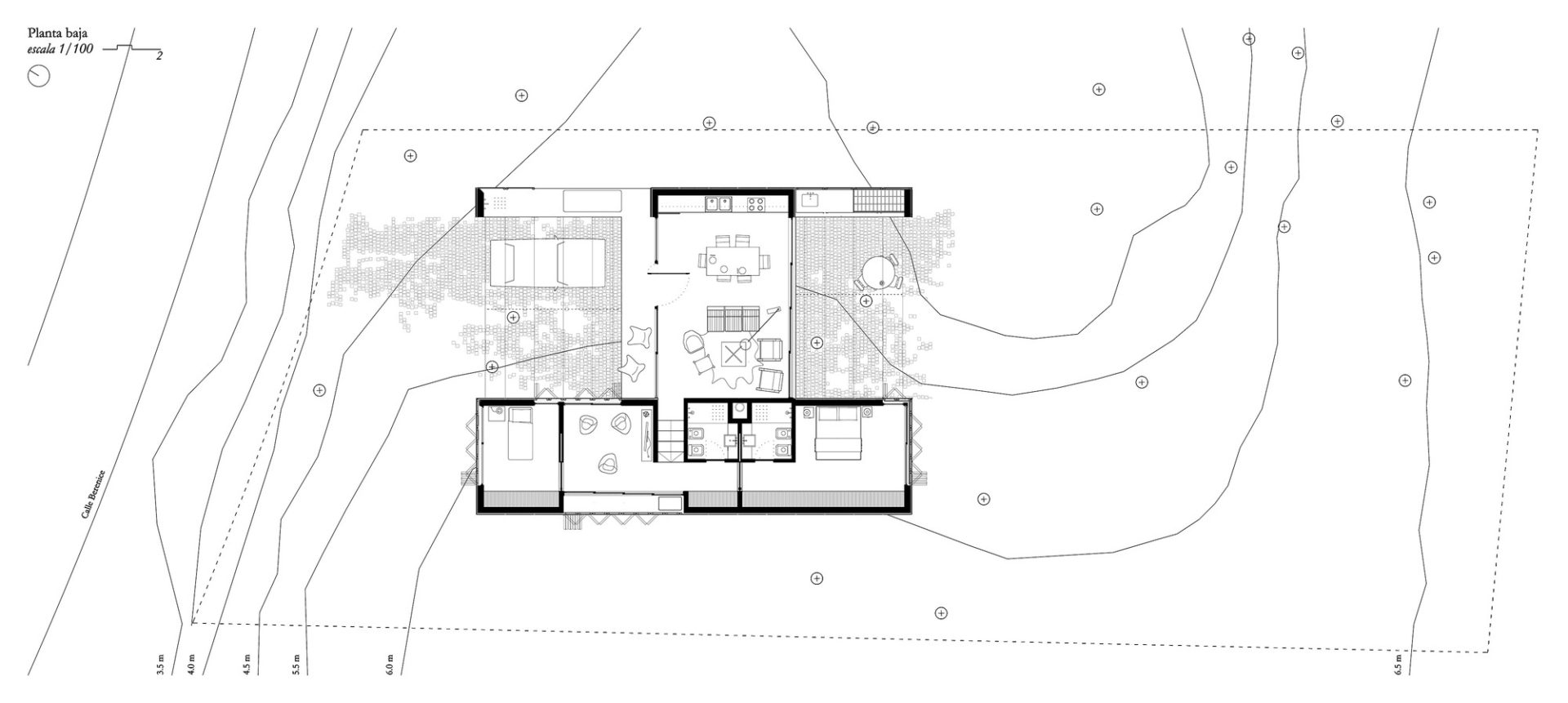With 1,722 square feet of living space, House Architecture Rifa G’07 is a moderately spacious and luxurious residence that can be found amidst a small pine forest in Punta del Este, Uruguay. The house was completed in 2014 and blends beautifully with its surrounding environment thanks to its ingenious contemporary design.
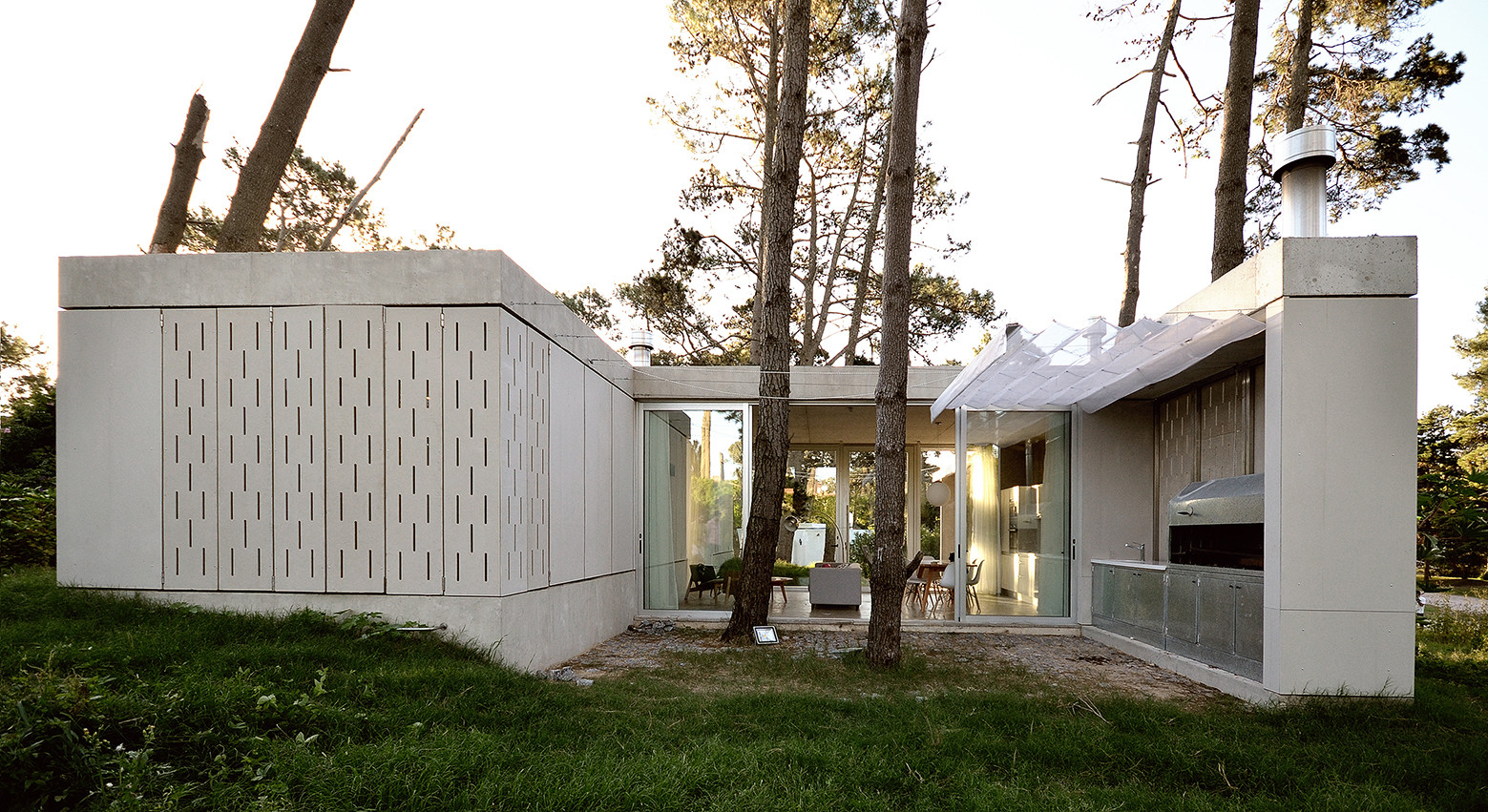
The project was designed by a team of architects that included Nicolás Rudolph, Omar Vila, Joaquín Lopez, Pablo, Patrick Apolant, Sebastián Martinez and Leandro Villalba. Their combined expertise led to the creation of a unique home, a sanctuary of tranquility and wellness that sits well removed from the chaotic sounds and crowds of a big city.
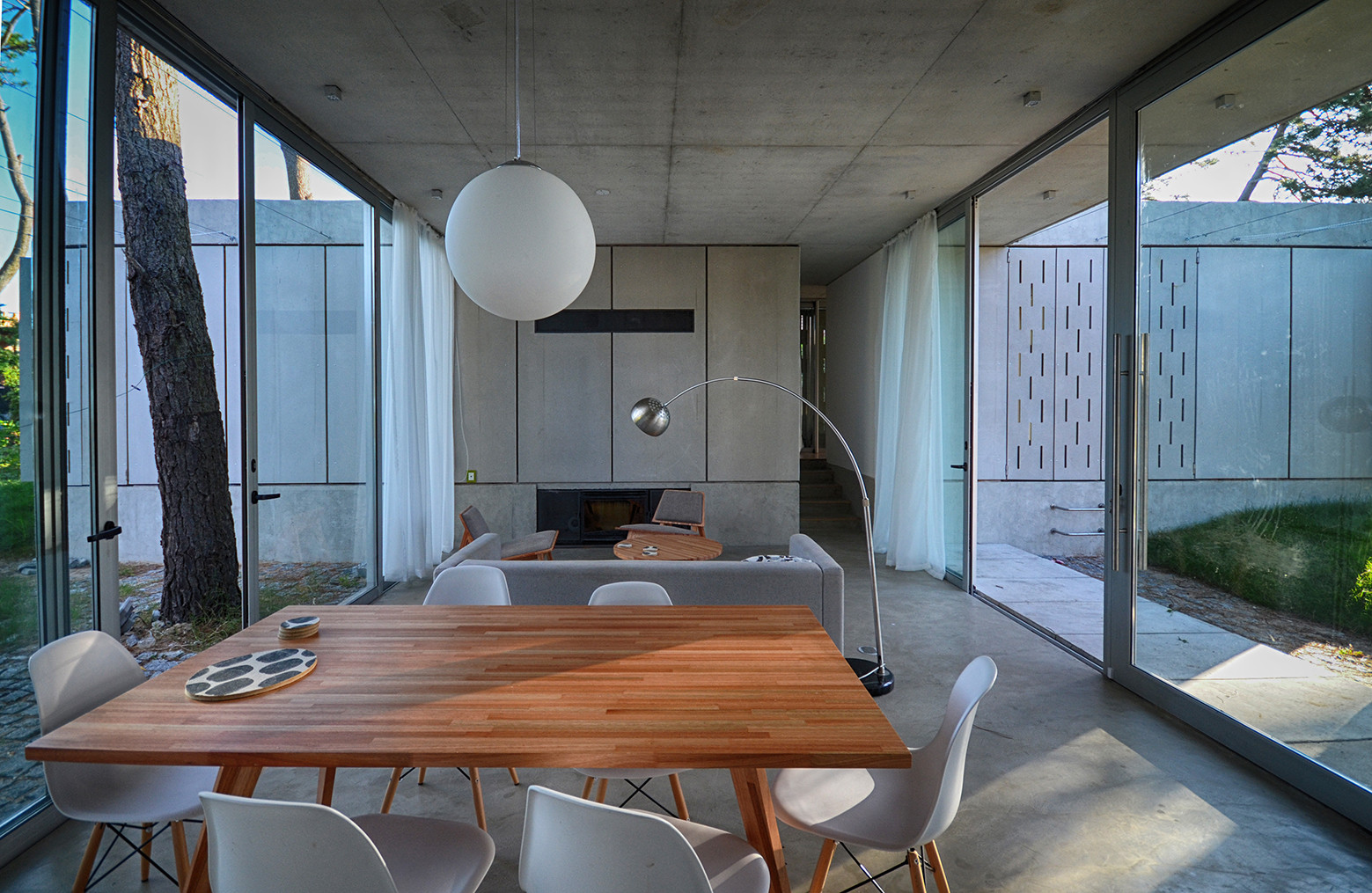
The residence features a contemporary design based on rough, durable elements inside and out. Its perforated-ventilated façade ensures passive cooling and goes a long way towards minimizing overall energy consumption. The living room enjoys plenty of natural light and is connected to an outdoor courtyard thanks to a series of sliding glass doors that also fade the limits between the indoors and outdoors.

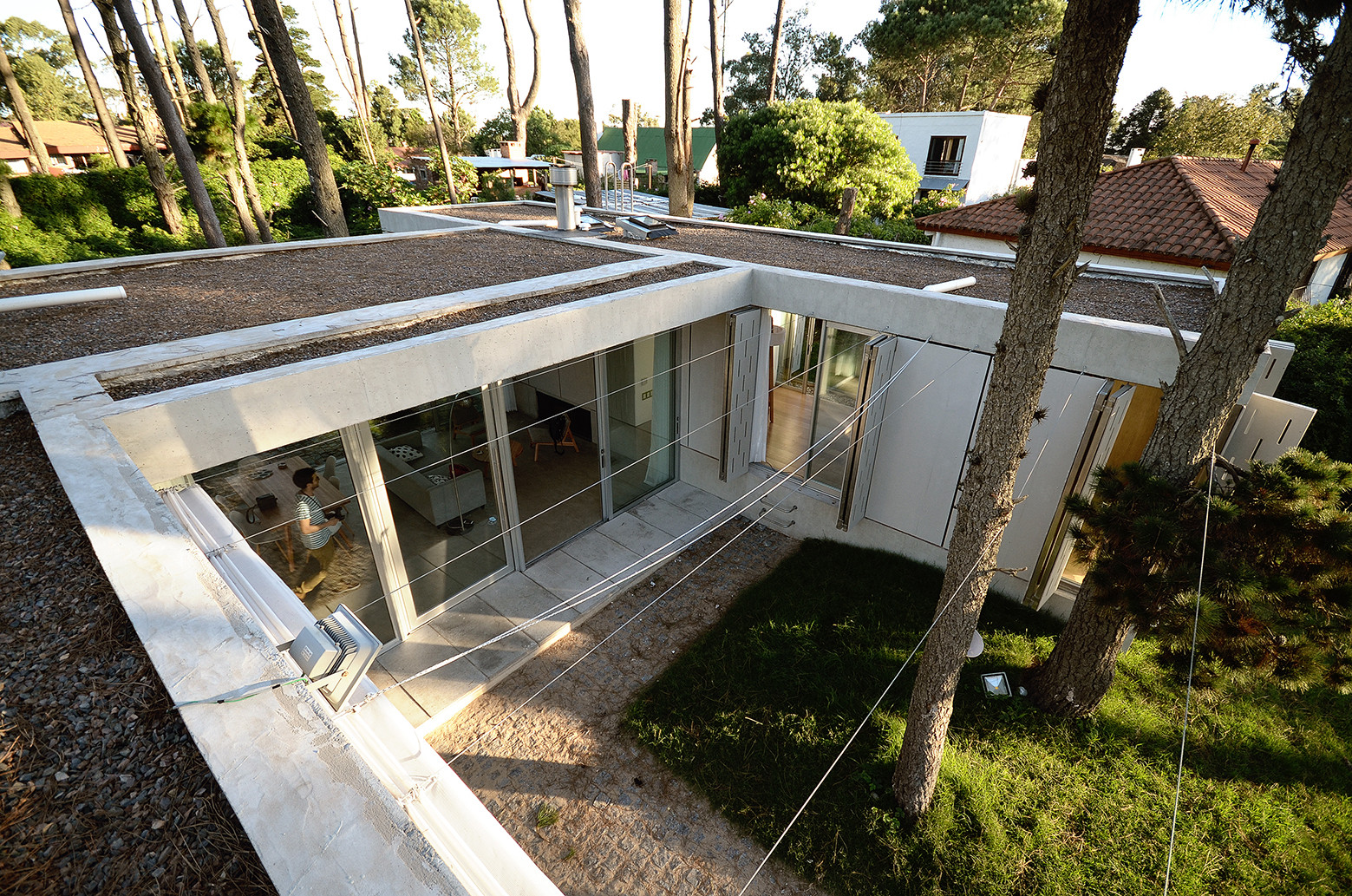
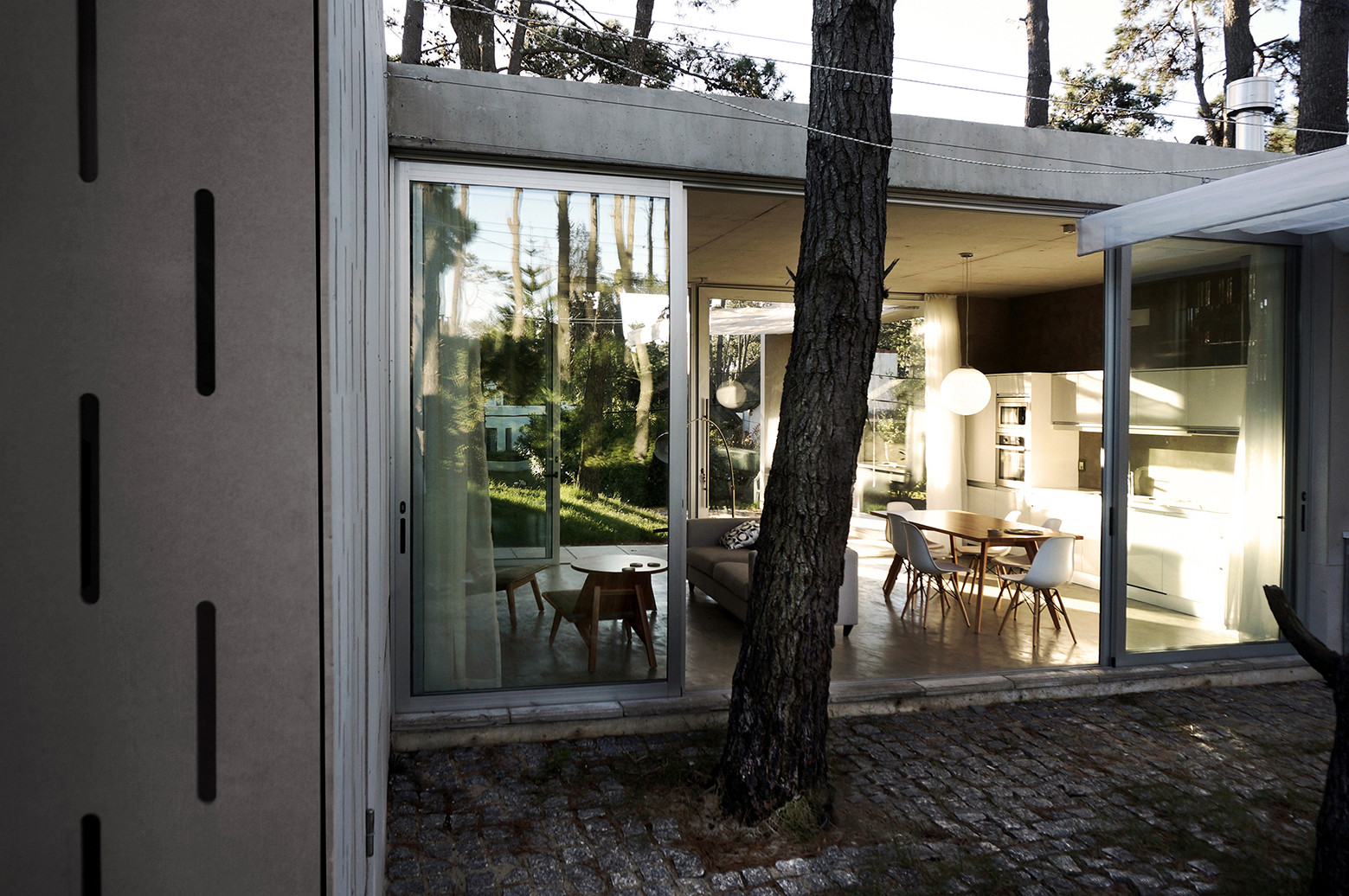
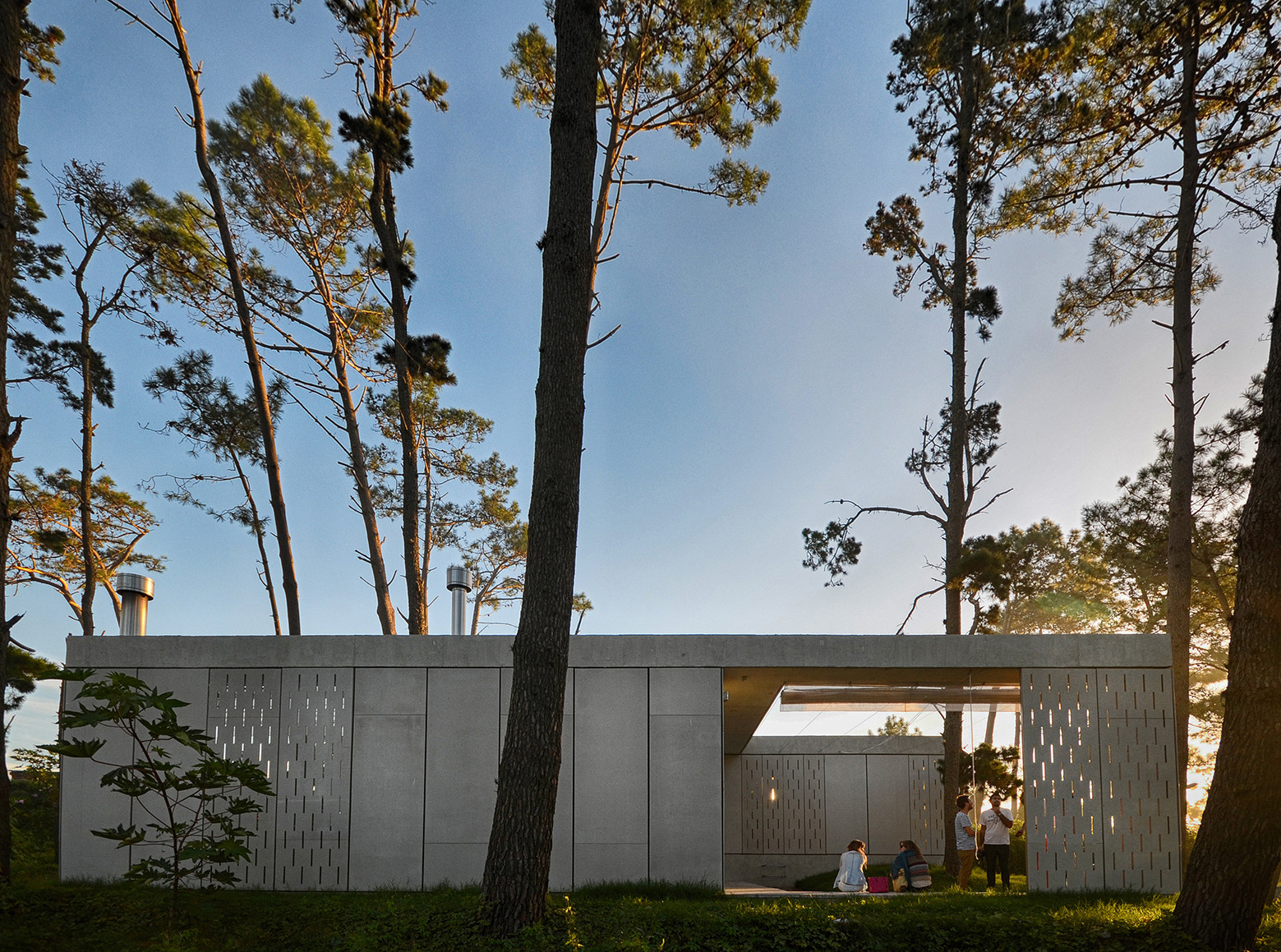
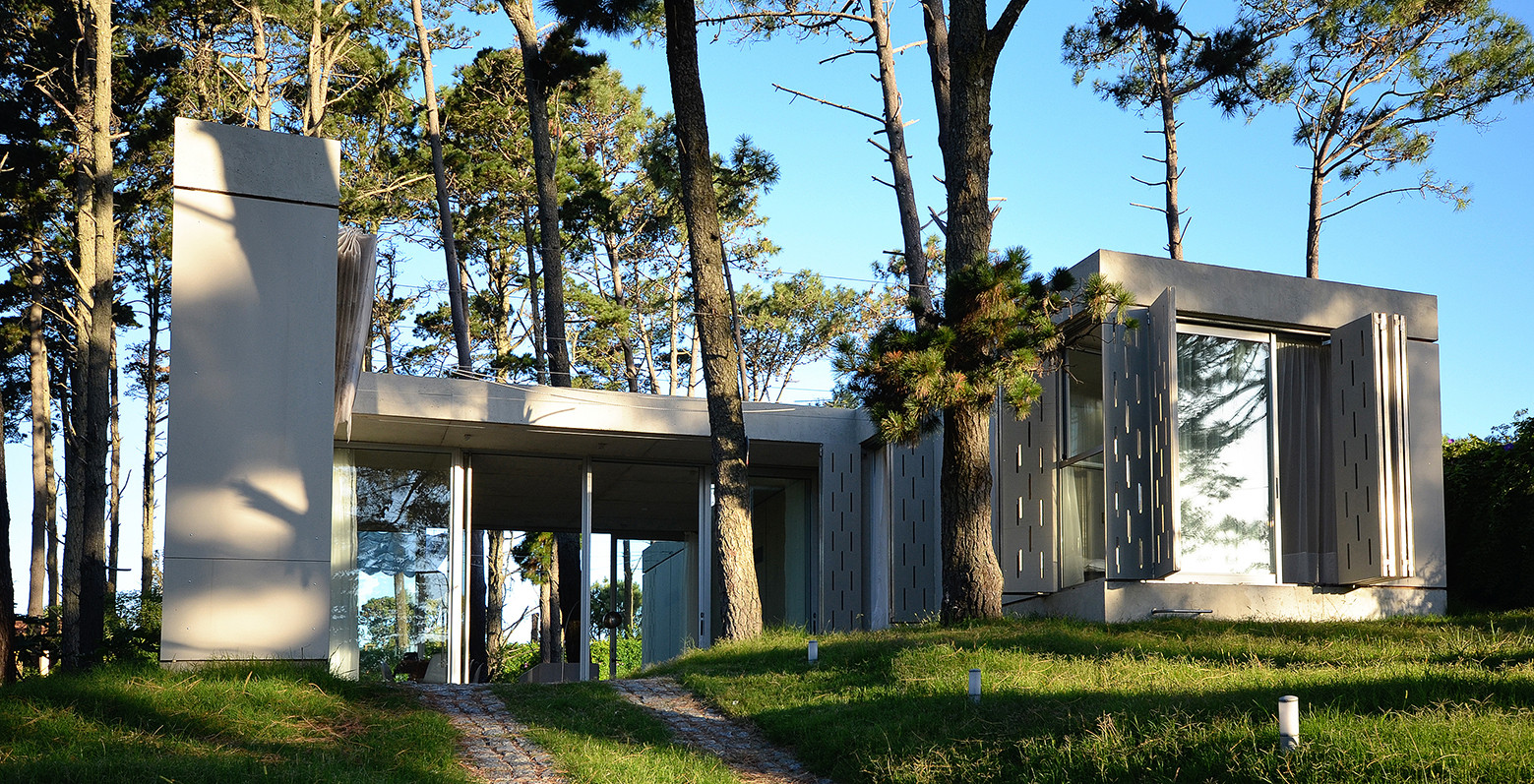
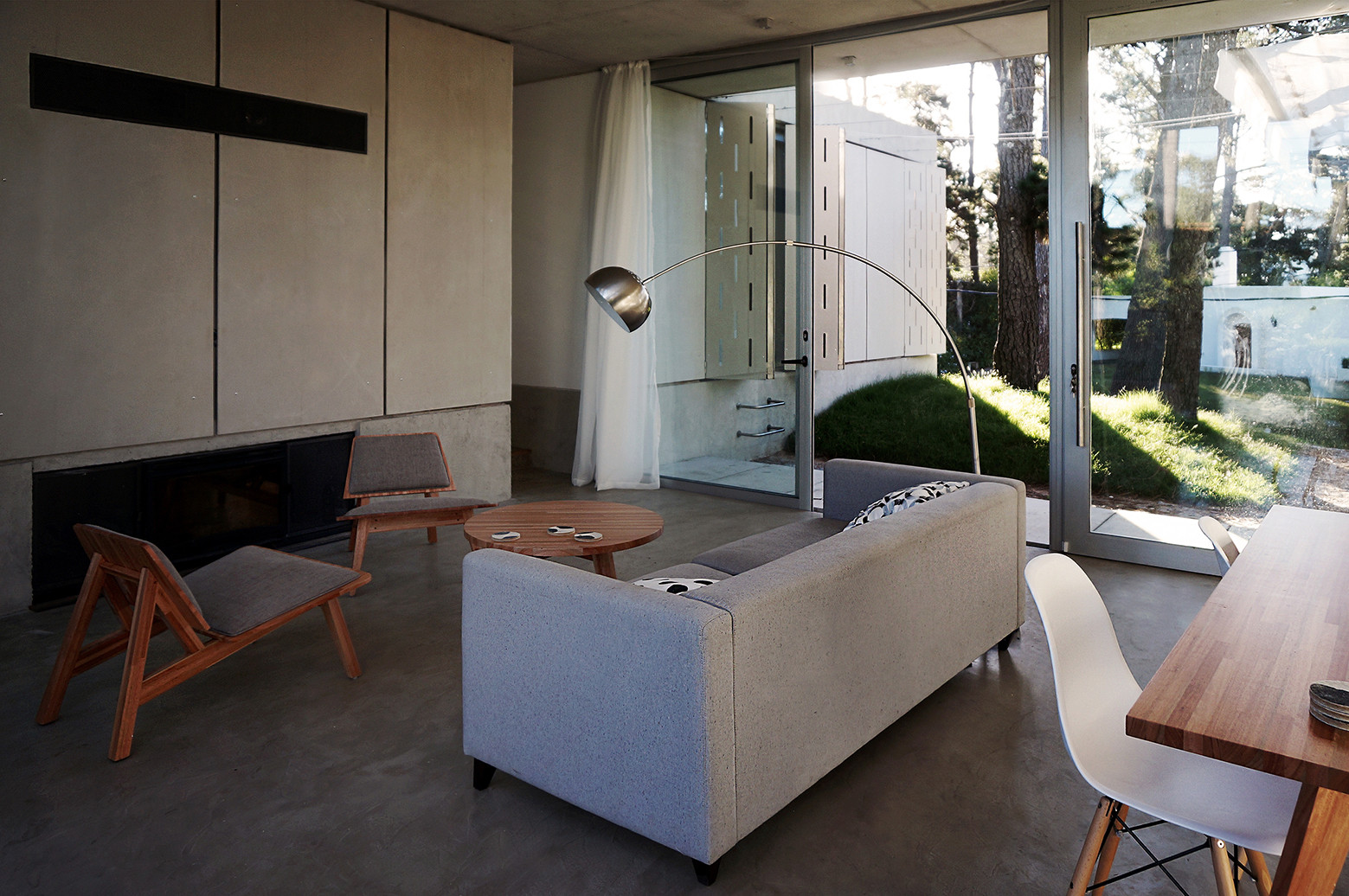
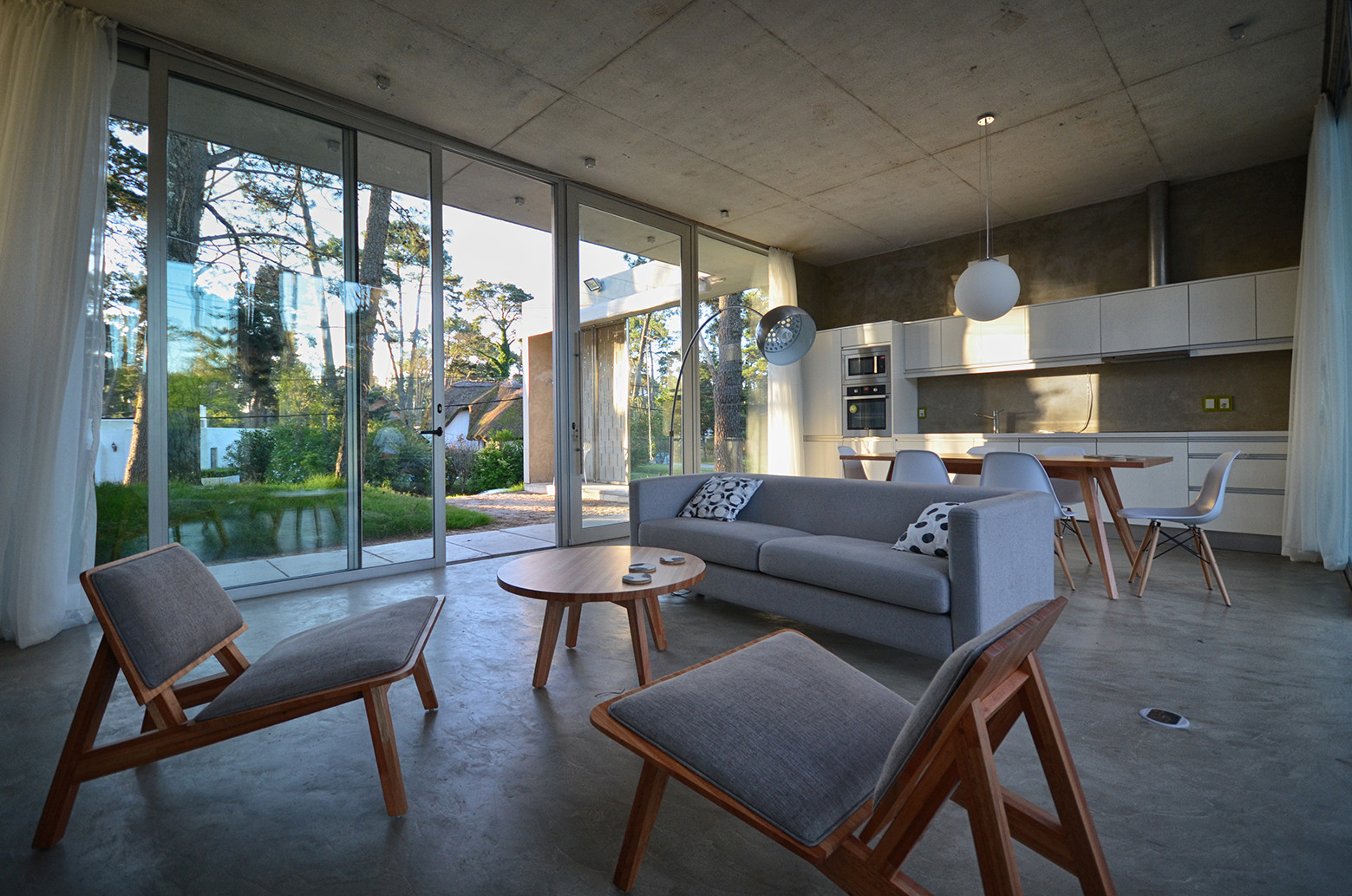
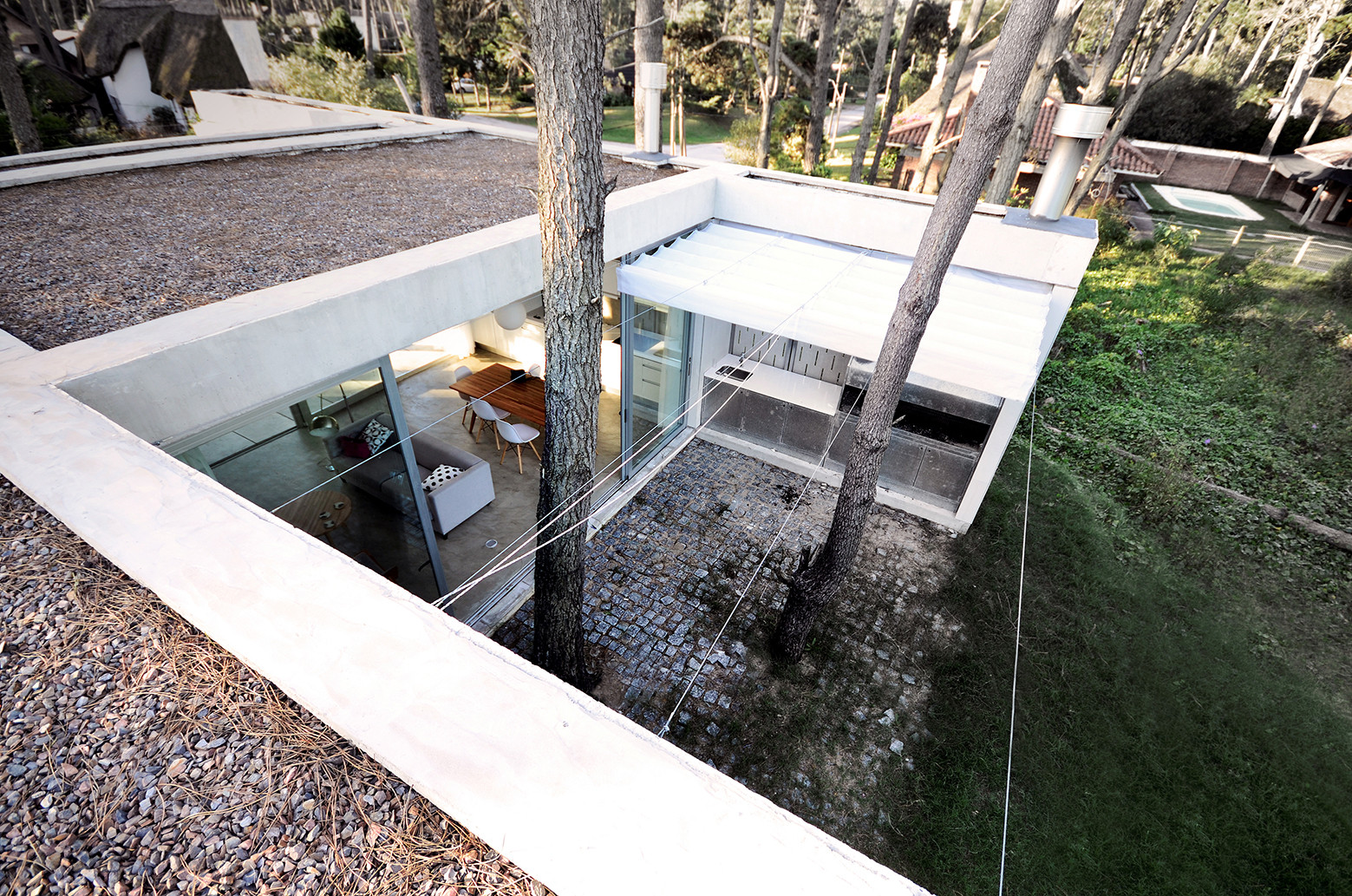
From the architect:
Which are the limits of the traditional housing protocol? The project is a specialized mediation mechanism between the ideas and the built reality.
Adaptability is searched in a realistic path, without sacrificing necessary explorations, not as an emulation of flexibility, but as a neutral inhabit platform. Multiple appropriations, rather than an options menu. Assuming an array of predictions for an undefined user seems an infertile path. Consequently, the disposition of inhabitable spaces can establish specific uses, as well as integrate or fuse with the exterior built spaces, circulations and green areas. This vectors suggest expansion possibilities according to the interests of the diverse inhabitants. The composition logic allows, in all cases, to increase the buildable space, from the public areas to the private space and in correspondence with the free terrain.
Such a concept poses a unique bond with the building’s environment, not as an unalterable guest, but as an act of construction. While the site welcomes us, the environment happens in terms of new topologies. The general configuration receives meaning and essence from the site itself. Two cement paneled heavy solids, embrace the micro pine forest, creating an in-between transparency that behaves as the main public space of the house.
Its section takes advantage of the topography, avoiding any kind of mimesis. The eastern exterior solid, has an elevation of 3.00m; meanwhile, as the land rises, an intimate space of 2.40m is provided for private rooms. In spite of this subtle vibration, the upper boundary remains imperturbable, allowing the continuity of the interior spaces by the shapes and textures.
Its asymmetric “H” typology outlines two outdoor patios, overlooked by the rooms, providing a big relation space. Meanwhile, the topography invades its surface, blurring the boundary between a projected exterior and a natural outside. A deploying inhabitable device takes the intimate life to the nature, and incorporates the ambient domain to its interior.
The dialog with the climate component is possible, owing to the Parti and implantation. Its sustainability appears not as a technological boast, but as design sobriety. The sunlight scans the bedrooms and collective areas in a balanced way. The opacity – transparency dialog of the sunlit facades is boosted by the patio system.
The non-compact Parti generates more area of vertical surfaces. Consequently, the perforated-ventilated façade generates a passive conditioning system, sensitive to orientation. Likewise, its versatility and piercing allow generating a conceptual solid. The material dimension of the piece allows to absorb the time passage. Its tectonic condition is not worn out by time; on the contrary, it is embellished. Its practical consequences are: durability and close-to-zero maintenance.
From a space phenomenology perspective, its sensible perforations constitute a haptic quality regarding air quality and light. From the inside, a series of perforations as a veil, reveal nuanced landscape dynamics. From the outside, they generate a cloak that both hides and shows a serene, stressed out domestic activity.
Light used as a material, idea as shape, gravity as reference. SIMPLICITY AND PRECISION. A nude, intelligent, ESSENTIAL beauty
Architects: Leandro Villalba, Nicolás Rudolph, Omar Vila, Joaquín López, Pablo Canén, Patrick Apolant, Sebastián Martinez
Location: Punta del Este, Uruguay
Area: 168.0 sqm
Project Year: 2014
Photographs: Nicolás Rudolph
Collaborators: pons + varela Arq. Santiago Pons, Arq. Alma Varela
Structure: Ing. Alberto Catañy
Sanitary Consultant: Daniel Costa
Lightning Consultant: Carlos Galante
Constructor: MR Construcciones
Furniture: Menini-Nicola
Site Area: 745 mts2
Constructed area: 96 mts2 interiors y 72.4 mts2 exteriors
